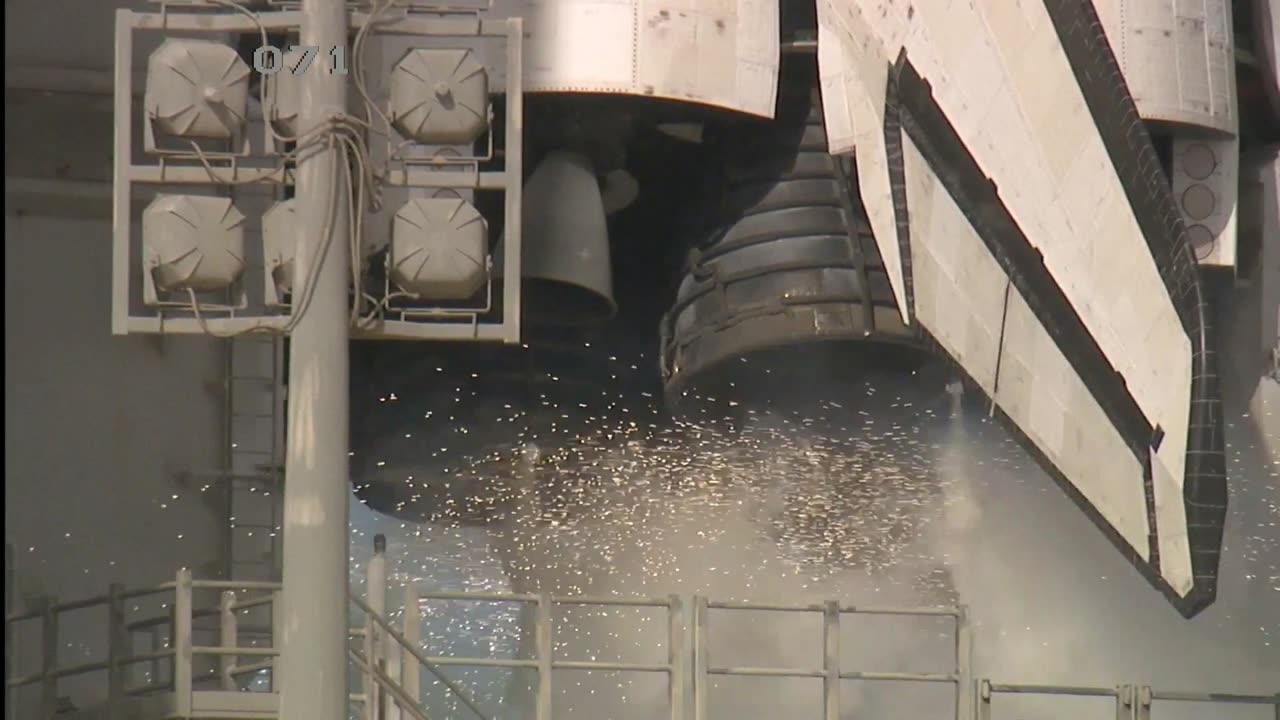Premium Only Content

countdown-to-rocket-launching
Certainly! Launching a space shuttle was a complex and meticulously planned process. Here's a brief description of a space shuttle launch:
1. **Pre-launch Preparations**: Before the launch, the shuttle, its solid rocket boosters, and the external fuel tank are assembled on the Mobile Launch Platform. The platform then moves to the launch pad on a massive crawler-transporter.
2. **Final Countdown**: Hours before the launch, the astronauts board the shuttle. The launch control team at the Kennedy Space Center checks and rechecks all systems. This is a methodical process with scheduled holds for assessments.
3. **Ignition**: The Shuttle Main Engines (three of them located at the rear of the shuttle) ignite first, followed milliseconds later by the ignition of the two Solid Rocket Boosters (SRBs) on either side of the external fuel tank. Once the SRBs ignite, the shuttle is committed to launch because they cannot be turned off once ignited.
4. **Liftoff**: With a combination of thrust from its main engines and the SRBs, the shuttle lifts off from the launch pad.
5. **SRB Separation**: About two minutes into the flight, after the SRBs have expended their fuel, they are jettisoned and fall back to Earth, where they are recovered and refurbished for reuse in future launches.
6. **External Tank Separation**: About eight minutes into the flight, once the shuttle reaches the edge of space, the main engines are shut down, and the large external fuel tank (which by now is empty) is jettisoned. It burns up upon reentry into the Earth's atmosphere.
7. **Orbit Insertion**: With assistance from its Orbital Maneuvering System (OMS) engines, the shuttle adjusts its trajectory and speed to achieve its desired orbit.
8. **In Orbit**: Once in its designated orbit, the shuttle can deploy satellites, repair them, or dock with the International Space Station (ISS). The shuttle was unique in its ability to carry large payloads both to and from space.
9. **Return & Landing**: After its mission is complete, the shuttle reenters the Earth's atmosphere. Using its heat-resistant tiles to protect it from the intense heat of reentry, the shuttle glides (unpowered) to a landing at a runway, much like an airplane. This made the shuttle the first reusable spacecraft.
Throughout its history, the U.S. Space Shuttle program saw 135 missions flown by five operational shuttles: Columbia, Challenger, Discovery, Atlantis, and Endeavour. Sadly, two of these missions ended in tragedy: Challenger in 1986 and Columbia in 2003, leading to significant changes in the program's safety and design. The shuttle program officially ended in 2011 after 30 years of operation.
-
 58:44
58:44
The Official Corbett Report Rumble Channel
10 hours agoTurning the Tide on 9/11 with Curt Weldon
1.91K14 -
 10:47
10:47
Nikko Ortiz
14 hours agoThese Tik Tok Clips Are Extremely Painful...
13.2K3 -
 8:12
8:12
VSOGunChannel
17 hours ago $0.02 earnedATF Still Wants to Take Your Incomplete Guns
1785 -
 44:06
44:06
Esports Awards
16 hours agoUber: The Voice of Overwatch, VALORANT & Esports’ Biggest Moments | Origins Podcast #27
26 -
 12:02
12:02
MudandMunitions
20 hours ago2,000 Rounds Prove Why the Glock 20 Gen 5 Is a MONSTER!
30 -
 39:06
39:06
Coin Stories with Natalie Brunell
2 days agoJeff Park on Whether the US Add Bitcoin to Its Reserves? | Coin Stories with Natalie Brunell
1103 -
 2:54:07
2:54:07
The Robert Scott Bell Show
18 hours agoRFK Shifts CDC Focus, Dr. Sabine Hazan, Ellen Tart-Jensen, Iridology, Catharine Arnston, Algae Health - The RSB Show 9-3-25
4892 -
 2:45:31
2:45:31
daniellesmithab
1 day agoAlberta Next: Medicine Hat Town Hall
2.45K -
 3:40:01
3:40:01
FreshandFit
8 hours agoEngaged Chick Gets EXPOSED For Having OF
62.7K106 -
 18:54
18:54
GritsGG
14 hours agoIs This SMG the New #1 Close Range Option on Warzone?
7.4K3